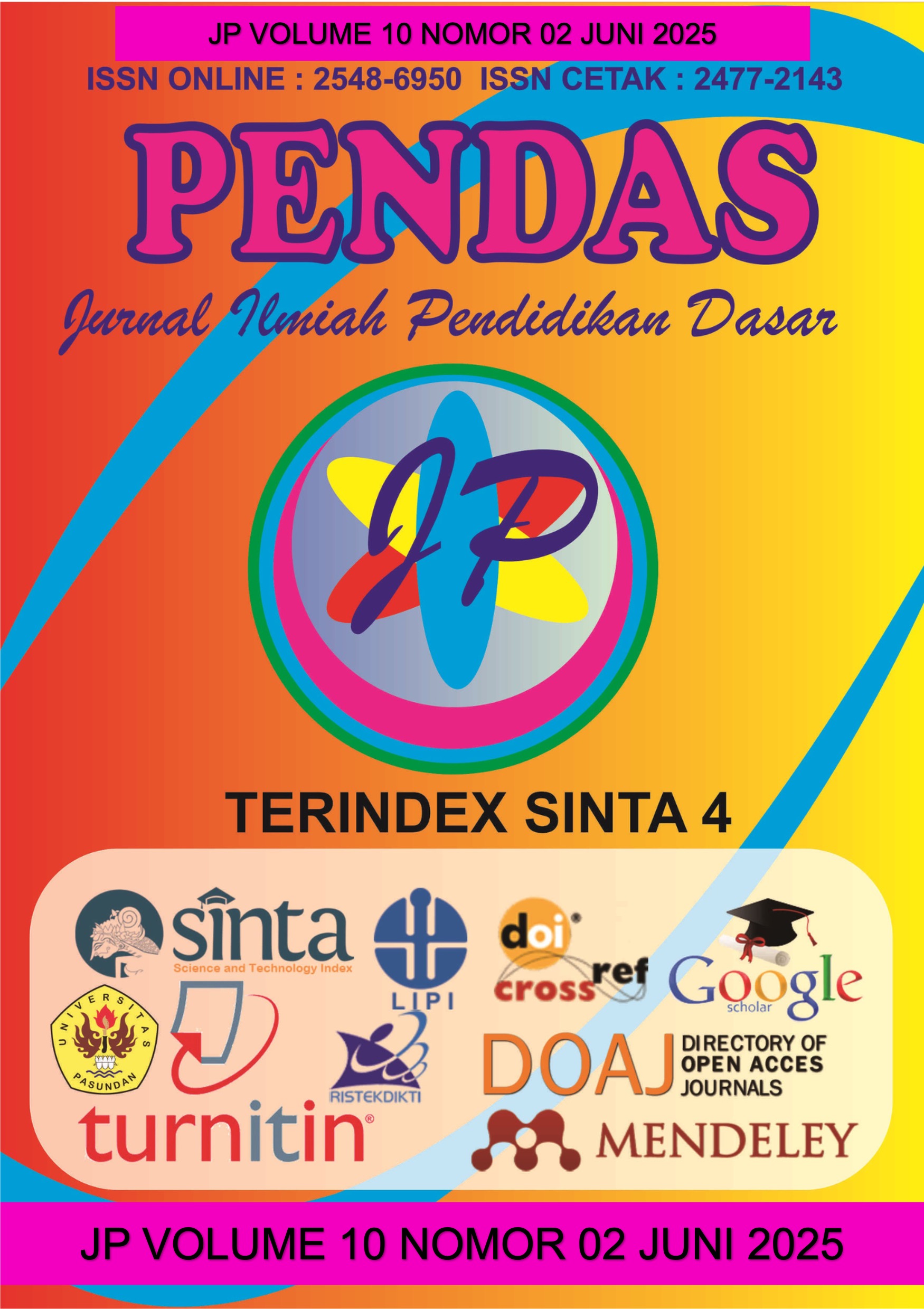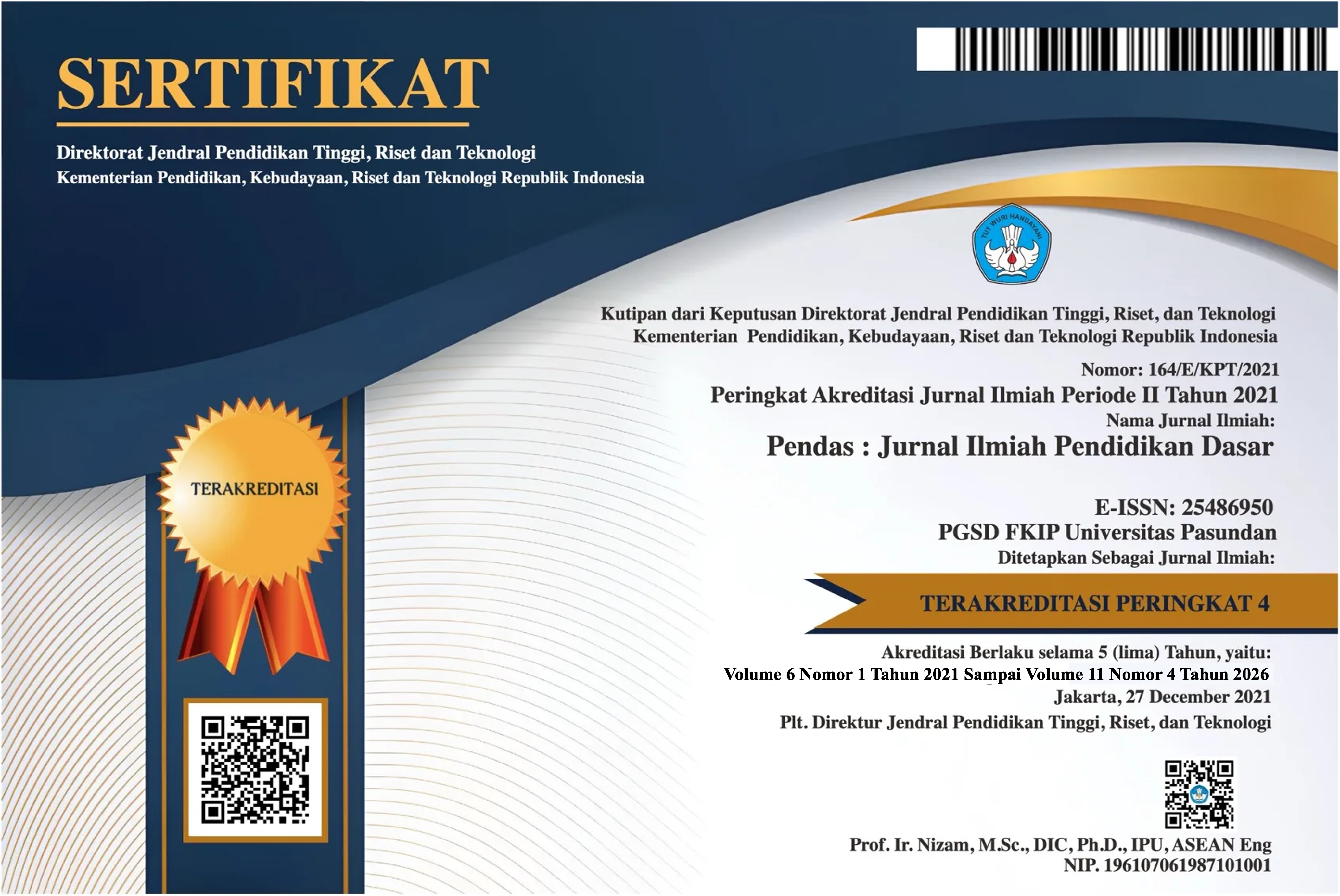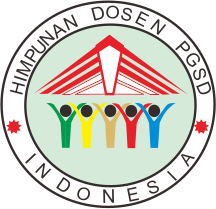Efektivitas Media Pembelajaran Wordwall Terhadap Hasil Belajar Siswa Pada Mata Pelajaran IPAS di SD N 1 Piji
DOI:
https://doi.org/10.23969/jp.v10i02.28214Keywords:
Wordwall, Learning Outcomes, IPASAbstract
This study aims to determine the effectiveness of Wordwall learning media on student learning outcomes in the subject of Science at SDN 1 Piji. This study uses a quantitative approach with a quasi-experimental model. The subjects of the study consisted of 29 fifth grade students who were divided into two groups, namely 16 students in the experimental class and 13 students in the control class. Data collection techniques used tests (pretest and posttest), observation, interviews, and questionnaires. The results of the study showed that Wordwall media had a significant effect on improving student learning outcomes. This was proven through the Independent Sample T-Test with a significance value (2-tailed) <0.05. In addition, the results of the Paired Sample T-Test also showed a significance value <0.05, and the N-Gain test showed an average N-Gain score of the experimental class of 79.34%, which was included in the effective category. Student responses to the use of Wordwall media were also positive, where 12 students stated that they liked and 4 students were interested in the media. Thus, it can be concluded that the Wordwall learning media is effective in improving student learning outcomes in the science subject at SDN 1 Piji.
Downloads
References
Agusti, N. M., & Aslam, A. (2022). Efektivitas Media Pembelajaran Aplikasi Wordwall Terhadap Hasil Belajar IPA Siswa Sekolah Dasar. Jurnal Basicedu, 6(4), 5794–5800. https://doi.org/10.31004/basicedu.v6i4.3053
Alfatonah, I. N. A., Kisda, Y. V., Septarina, A., Ravika, A., & Jadidah, I. T. (2023). Kesulitan Belajar Peserta Didik pada Mata Pelajaran IPAS Kurikulum Merdeka Kelas IV. Jurnal Basicedu, 7(6), 3397–3405. https://doi.org/10.31004/basicedu.v7i6.6372
Dwi Olimpiani, A., Aditya Nugroho, D., Edy Prayitno, J., Ragil Widianto Atmojo, I., & Anggin Sambarani, G. (2024). Peningkatan Hasil Belajar Ipas Kelas V Menggunakan Model Problem Based Learning dan Media Wordwall. Cerdika: Jurnal Ilmiah Indonesia, 4(4), 352–359. https://doi.org/10.59141/cerdika.v4i4.792
Hasanah, K. U., Ngali, M., Makmun, Z., & Aisyah, N. (2024). scidac plus Artikel ini menggunakan lisensi Creative Commons Attribution 4.0 International License HASIL BELAJAR SISWA KELAS IV SEKOLAH DASAR. In Berkala Ilmiah Pendidikan (Vol. 4, Issue 1).
Kurnia, N., Putera Permana, E., Permatasari, C., Studi, P., Guru, P., Dasar, S., Profesi Guru, P., Nusantara, U., Kediri, P., Mojoroto, N., & Kediri, K. (2023). Implementasi Media Game Edukasi Wordwall untuk Meningkatkan Hasil Belajar Siswa Kelas IV SDN Mojoroto 4 Kota Kediri. Jurnal Simki Pedagogia, 6, 589–598. https://jiped.org/index.php/JSP
Noor, T., Azizah, A., Arifin, S., & Puspitasari, I. (n.d.). Penerapan Media Pembelajaran Wordwall dalam Menunjang Pemahaman Konsep Siswa. http://Jiip.stkipyapisdompu.ac.id
Rafidah, H. N., Mudzanatun, M., Armin Wibowo, S., & Muzaki Assidiqi, M. (2024). Penerapan Kuis Wordwall dalam Keaktifan Belajar Peserta Didik Kelas IV C SD Supriyadi Semarang. Indo-MathEdu Intellectuals Journal, 5(2), 2498–2504. https://doi.org/10.54373/imeij.v5i2.1072
Salikha, A. E., Nurkhaliza, M., & Rofisian, N. (2024). STUDI LITERATUR TENTANG PENERAPAN KURIKULUM MERDEKA PADA MATA PELAJARAN IPAS DI SEKOLAH DASAR. In Global Education Trends (Vol. 2, Issue 1).
Savira, A., & Gunawan, R. (2022). Pengaruh Media Aplikasi Wordwall dalam Meningkatkan Hasil Belajar Mata Pelajaran IPA di Sekolah Dasar. EDUKATIF : JURNAL ILMU PENDIDIKAN, 4(4), 5453–5460. https://doi.org/10.31004/edukatif.v4i4.3332
Yanti, N. H., Nuvitalia, D., Miyono, N., & Rizkiyati, N. (2023). Analisis Keaktifan Belajar Siswa Sekolah Dasar menggunakan Aplikasi Wordwall. Ideguru: Jurnal Karya Ilmiah Guru, 8(3), 634–638. https://doi.org/10.51169/ideguru.v8i3.667
Downloads
Published
Issue
Section
License
Copyright (c) 2025 Pendas : Jurnal Ilmiah Pendidikan Dasar

This work is licensed under a Creative Commons Attribution 4.0 International License.



















